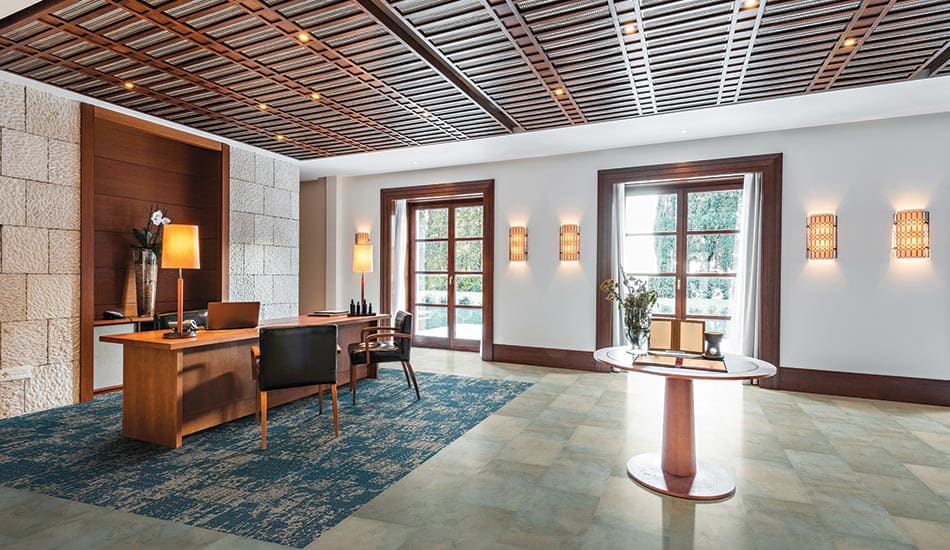
The flooring of any space affects its aesthetics, just like any other element of interior design. Hence, it is important to choose the flooring carefully, depending on the effect you want to achieve. Carpet tiles have become a popular option in the flooring department. Once exclusively used for commercial and institutional spaces, carpet tiles have found their way into residential homes in recent years. One of the reasons is that carpet tiles, especially patterned ones, provide many styling and design options. Here is all you need to know about patterned carpet tiles:
One is spoilt for choice when it comes to patterned carpet tiles. Apart from the available patterns, several companies also let customers create their patterns. Here's how you can use patterned carpet tiles:
Most prevalent among the lot are tufted carpets. They are inexpensive and available in a variety of designs. However, they are low in quality and durability.
Superior in quality, woven carpets are made with natural materials and are highly durable.
Although highly resistant and practical, needle-punched carpets are not usually used because they are not versatile.
Patterned carpet tiles are made from different kinds of fibers. In most cases, more than one type of fiber is combined to create a carpet tile. Different types of fibers from which carpet tiles are manufactured are:
It is the most commonly used fiber. Carpet tiles made with nylon are durable and more resilient. They come with stain-blocking technology and are static-free. Moreover, nylon-based carpet tiles are comfortable and aesthetically pleasing.
A synthetic fiber, carpet tiles made with this material are resistant to fading and staining. Moreover, it is cheaper than the other alternatives. Polyester fiber offers the most variety in terms of colors and patterns.
Carpet tiles made with wool are perfect for achieving a luxurious effect. They not only look and feel plush but are also stain-resistant. Moreover, carpet tiles made with wool offer the best structural integrity. The only downside of wool is that it is more expensive than its counterparts.
Another synthetic fiber that gives a similar look to wool, polypropylene is also fade and stain-resistant. Although cheaper, it is low on durability as compared to wool.
If you are looking for a sustainable carpet tile, go for recycled fibers that are made with materials like nylon waste, fishing nets, etc. These carpet tiles are not only attractive but also durable.
As carpet tiles come in small square shapes, they are easy to transport and install. Most carpet tiles come with backing, making it easy to install them directly on the floor.
Compared to wall-to-wall carpets, the wastage of carpet tiles is only 1-3%. As they come in small sizes, only very little cutting or adjustment is needed to fit them on the floor.
One of the main advantages of carpet tiles is that they are cheaper than wall-to-wall carpets.
The best part about these tiles is that you do not need to replace the entire thing if a small section is stained or damaged. All you need to do is take out the damaged tile and replace it with another one.
Patterned carpet tiles do have certain disadvantages. They lack the plushness or thickness of the usual wall-to-wall carpets. However, carpet tiles have made carpeting more affordable and sustainable. Moreover, patterned carpet tiles add to the aesthetics of a place and at the same time, help make a statement.